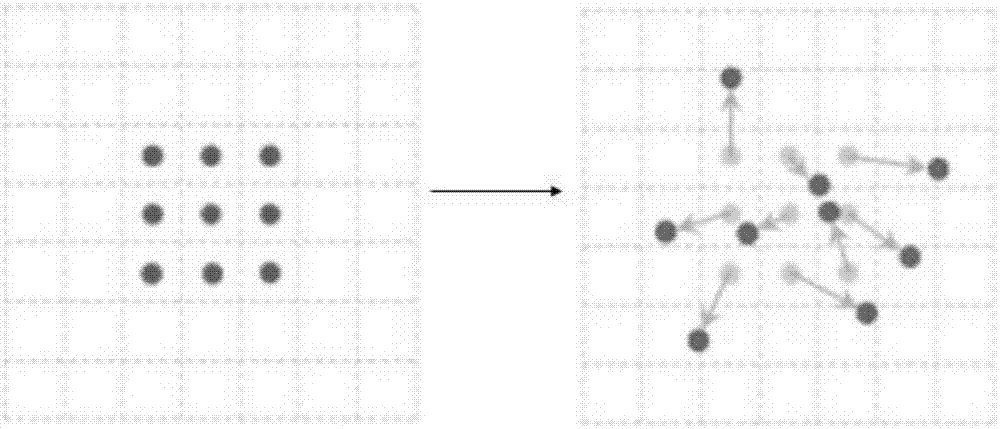Deformable convolution kernel method based on WGAN (Wasserstein-Generative Adversarial Network) model
A convolution kernel and model technology, applied in the field of deep learning neural network, can solve the problem that the quality of the generated image by the generator does not have a unified evaluation standard.
- Summary
- Abstract
- Description
- Claims
- Application Information
AI Technical Summary
Problems solved by technology
Method used
Image
Examples
Embodiment
[0029] This embodiment discloses a deformable convolution kernel method based on the WGAN model, which specifically includes the following steps:
[0030] Step S1: Construct an original generative confrontation network model, and the generator inputs the generated image to the discriminator for network training.
[0031] Step S2, construct the Wötherstein distance as a judgment index for the confrontation network model;
[0032] Different convolution kernels are reflected in the different matrix values and the number of rows and columns.
[0033] Construct multiple convolution kernels. In the process of image processing, different convolution kernels means that different features of the generated image can be learned during the network training process.
[0034] In the network model involved in the present invention, the Wasserstein distance is used as the evaluation index for generating the confrontation network, so that the training of the entire model can proceed in the correct dir...
PUM
 Login to View More
Login to View More Abstract
Description
Claims
Application Information
 Login to View More
Login to View More - R&D
- Intellectual Property
- Life Sciences
- Materials
- Tech Scout
- Unparalleled Data Quality
- Higher Quality Content
- 60% Fewer Hallucinations
Browse by: Latest US Patents, China's latest patents, Technical Efficacy Thesaurus, Application Domain, Technology Topic, Popular Technical Reports.
© 2025 PatSnap. All rights reserved.Legal|Privacy policy|Modern Slavery Act Transparency Statement|Sitemap|About US| Contact US: help@patsnap.com



